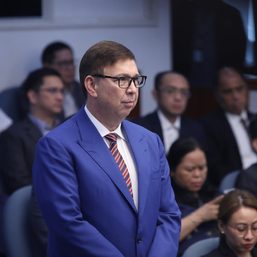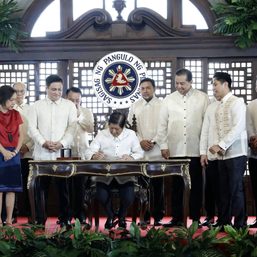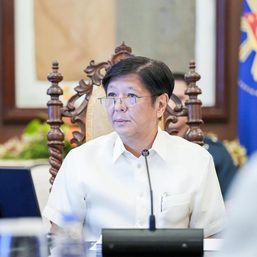SUMMARY
This is AI generated summarization, which may have errors. For context, always refer to the full article.
![[ANALYSIS] Economists vs Maharlika: Some key points](https://www.rappler.com/tachyon/2023/06/maharlika-fund-TL-june-9-2023.jpg)
On June 6, 2023, 21 UP School of Economics faculty members – myself included – published a discussion paper contesting the Maharlika Investment Fund.
We made 6 key points. Let me share some highlights here for you.
“First, the raison d’être of the Maharlika Investment Fund remains unclear even as it has already hurdled both houses of Congress.”
Is Maharlika a “sovereign wealth fund” or a “strategic investment fund”? It’s not clear in the bill. And the distinction is crucial.
In a typical sovereign wealth fund (SWF), a country’s surplus funds from, say, oil, are used to set up a fund that can be invested globally in financial instruments (e.g., stocks, bonds) and other investments in search of high returns.
In a strategic investment fund (SIF), however, a country invests in both financial investments and economic projects like roads, bridges, etc.
Maharlika seems to be more like an SIF. But lawmakers still call Maharlika an SWF rather than an SIF.
“Second, due to its confused goals, the MIF bill does not adequately articulate and take account of several implications of the fund’s dual-bottom line objective.”
There are several implications of not saying (or knowing?) what Maharlika exactly is.
For instance, what exactly does Maharlika bring to the table, over and above other parts of government with a similar mandate to promote development?
We already have the National Development Corporation (NDC) which is tasked “to pursue commercial, industrial, agricultural or mining ventures in order to give the necessary impetus to national economic development.”
Compare this with a provision of the Maharlika bill, which allows the fund to participate in “joint ventures or consortiums with Filipino and foreign investors, whether in the majority or minority position in commercial, industrial, mining, agricultural, housing, energy, and other enterprises, which may be necessary or contributory to the economic development of the country, or important to the public interest.” Redundant, no?
Second, what investments will Maharlika enter?
The bill allows for a veritable hodgepodge of investments: financial investments (“cash, foreign currencies,” “fixed income instruments,” “domestic and corporate bonds”) as well as economic investments (such as “road and infrastructure projects,” “programs and projects on health, education, research, and innovation”).
We don’t want Maharlika to invest in “everything, everywhere, all at once” – in the words of investment manager Stephen CuUnjieng. In other countries, SIFs have precise allocations for their investments.
Third, Maharlika promises to contribute to the nation’s growth. But is it really a prerequisite to growth? There’s no study from NEDA or DOF guaranteeing this.
Will Maharlika’s investments also be aligned with the Philippine Development Plan or the Public Investment Plan – both crafted by NEDA? Unfortunately, the bill makes no mention of such plans. So what’s to prevent Maharlika from investing in things that deviate from the country’s development plan and don’t necessarily bring about growth for all?
Setting parameters for investments at the outset will also be crucial in evaluating whether Maharlika is effective or not.
Note that returns to financial investments are vastly different from returns to economic investments. The latter can take years to manifest, and are a lot harder (if not nearly impossible) to measure.
In other countries, the relative importance of financial versus economic investments is clearly delineated. In the Maharlika bill, it’s not.
Will investments (say, in infrastructure) also be a lot faster and more efficient with Maharlika in place? There’s no assurance of this at all. Maybe government can instead improve public-private partnerships (PPPs), or make the national budget and its execution more efficient. If building infrastructure projects will be slower with Maharlika, what’s the point?
“Third, the manner of funding the Maharlika Investment Fund poses huge risks to our already strained public coffers and is vulnerable to moral hazard.”
We don’t have surplus funds. The budget deficit (or revenue shortfall) of government reached P1.6 trillion in 2022. The current account deficit is also at its highest since the earliest comparable data in 2005; this means we’re increasingly a net borrower from the rest of the world.
So where will Maharlika get its initial money from? It will basically scour state-owned banks (Land Bank of the Philippines or LBP and Development Bank of the Philippines or DBP), the Bangko Sentral ng Pilipinas, taxpayers’ money, PAGCOR or Philippine Amusement and Gaming Corp. earnings, and privatization proceeds.
It’s not as if the institutions mentioned above have lots of funds to spare. As pointed out by economists like Enrico Villanueva, getting capital from LBP and DBP risks reducing the capital of these banks, below the minimum required of them by the BSP. This could impair these banks’ ability to lend to farmers and other sectors, making them vulnerable to bank runs if confidence in them erodes.
The BSP also needs the money coming from their net profits. They need P200 billion as their capital, something that will take them years to raise. But by diverting all their net profits to Maharlika instead, for two years at least, it will take them longer to raise the money they need to fulfill their functions – like price stability and bank regulation – well. (Note that Maharlika’s authorized capital is P500 billion, 2.5 times the capital of the BSP itself.)
Lots of people were worried that the pension funds of GSIS and SSS might be roped in for Maharlika. Although senators prohibited these institutions from investing in Maharlika, it’s unsettling that the President and the finance secretary are both still suggesting the opposite. Why are they so adamant about this?
“Fourth, red flags abound in the MIC’s governance structure.”
With so much public funds going to Maharlika, it’s all the more important to have a robust governance structure. The last thing we want is to politicize the fund and make it vulnerable to embezzlement and other corrupt acts.
But this is perhaps the biggest red flag of Maharlika: all the board members of the Maharlika Investment Corporation, who will oversee the fund and the investments, are presidential appointees. Even the so-called “independent directors” are presidential appointees. The advisory body also comprises presidential appointees, as well as many members of the risk management unit.
Based on global best practice, you want to attract professional fund managers and risk officers from the private sector to run an SIF. This requires humongous fees, of course, which further make it imperative that investments are profitable. But hiring experienced and competent people from the private sector – and allowing them to do their thing – will improve the chances of an SIF’s success.
Malaysia’s 1MDB provides a cautionary tale. A poor governance structure led to an eye-watering $4.5 billion of its funds being diverted to offshore bank accounts and shell companies.
We don’t have to look too far. During Martial Law, the dictator Ferdinand E. Marcos instructed government financial institutions to lend to cronies using so-called “behest loans” – and compromised them in the process. Even the Central Bank was implicated in this modus operandi, leading to its losses amounting to P300 billion by the end of the dictatorship.
And remember who used offshore accounts and shell companies to stash away billions of dollars of ill-gotten wealth?
“Fifth, with elevated global economic headwinds and uncertainties, it is unlikely that MIF will be able to ‘crowd-in’ investments and eke out returns that are large enough for the fund to grow substantially to finance development projects.”
This is pretty self-explanatory. The world economy is not in the best shape, what with persistent inflation, higher interest rates, and the continuing Russian invasion of Ukraine which has led to global shockwaves and disruptions. It’s a hard time to chase investments with good returns. Even some of the big and mature SWFs worldwide have suffered losses: in 2022, total assets of SWFs fell by $2.2 trillion.
“Sixth, the preoccupation with this defective proposal has diverted attention from more vital and urgent national agenda that the administration itself has rightly identified, notably the need to reform the retirement and pension system for military and uniformed personnel.”
There are so many other problems we ought to be focusing on, like the ballooning of the deficit and debt due to the unsustainable pension system of the military and uniformed personnel (MUP). Apart from this, we have an education crisis, the stagnation of agriculture, and the impending energy crisis when Malampaya’s natural gas reserves run out. Government should be focusing on these issues and funding more worthwhile projects – not Maharlika.
I hope you can find the time to read our discussion paper in full.
We concluded as follows: “[W]e call upon President Marcos to seriously reconsider the final approval of the Maharlika Investment Fund bill, and present before the public a clear and solid rationale for setting it up in the first place…”
Also, “We also call on our former and present colleagues who are now part of the Marcos economic team to reconsider their position on Maharlika and advise the President accordingly, in line with their best appreciation of their discipline and the reservations expressed by the rest of the economics profession of the country.”
There’s still room to craft a good IRR (Implementing Rules and Regulations) for Maharlika. But the bill itself contains too many fundamental flaws that the IRR alone can’t fix. Maybe it will be best for the President to veto the bill for now, and let Congress revisit and finetune the proposal.
Most importantly, the public must be allowed to further discuss and scrutinize this proposal. This is only fitting because after all our money is at stake. – Rappler.com
JC Punongbayan, PhD is an assistant professor at the UP School of Economics and the author of False Nostalgia: The Marcos “Golden Age” Myths and How to Debunk Them. JC’s views are independent of his affiliations. Follow him on Twitter (@jcpunongbayan) and Usapang Econ Podcast.
Add a comment
How does this make you feel?






![[In This Economy] Is the Marcos government unlawfully dipping into PhilHealth funds?](https://www.rappler.com/tachyon/2024/07/marcos-government-philhealth-funds-july-12-2024.jpg?resize=257%2C257&crop=425px%2C0px%2C1080px%2C1080px)


![[In This Economy] What foreigners are saying about the Maharlika fund](https://www.rappler.com/tachyon/2023/12/TL-foreigners-maharlika-fund-dec-1-2023.jpg?resize=257%2C257&crop_strategy=attention)



![[In This Economy] Marcos’ POGO ban is popular, but will it work?](https://www.rappler.com/tachyon/2024/07/thought-leaders-marcos-pogo-ban.jpg?resize=257%2C257&crop=255px%2C0px%2C720px%2C720px)
![[Rappler Investigates] POGOs no-go as Typhoon Carina exits](https://www.rappler.com/tachyon/2024/07/newsletter-graphics-carina-pogo.jpg?resize=257%2C257&crop=424px%2C0px%2C1080px%2C1080px)







![[WATCH] #TheLeaderIWant: Filipino voters sound off on community issues a year before 2025 elections](https://www.rappler.com/tachyon/2024/05/filipino-voters-sound-off-on-community-issues-1.jpg?resize=257%2C257&crop=276px%2C0px%2C720px%2C720px)
![[EDITORIAL] Apat na taon na lang Ginoong Marcos, ‘di na puwede ang papetiks-petiks](https://www.rappler.com/tachyon/2024/07/animated-bongbong-marcos-2024-sona-day-carousel.jpg?resize=257%2C257&crop=280px%2C0px%2C720px%2C720px)
![[In This Economy] Delulunomics: Kailan magiging upper-middle income country ang Pilipinas?](https://www.rappler.com/tachyon/2024/07/in-this-economy-upper-middle-income-country.jpg?resize=257%2C257&crop=421px%2C0px%2C1080px%2C1080px)

![[EDITORIAL] Marcos Year 2: Hilong-talilong](https://www.rappler.com/tachyon/2024/07/animated-bongbong-marcos-2nd-sona-carousel.jpg?resize=257%2C257&crop=136px%2C0px%2C720px%2C720px)
![[Newspoint] A fighting presence](https://www.rappler.com/tachyon/2024/07/thought-leaders-a-fighting-presence.jpg?resize=257%2C257&crop=441px%2C0px%2C1080px%2C1080px)
There are no comments yet. Add your comment to start the conversation.